Last week there was news of a bronze statue of the Blessed Virgin Mary in New Mexico that was weeping chrism oil. You can read about it here.
It prompted this article about another weeping statue phenomenon in the Washington DC area back in the early 1990s. The author links the phenomenon with the clerical sex abuse crisis, and other writers have made links between the New Mexico weeping madonna and the clergy sex abuse problem–noticing that the statue is weeping chrism oil used for ordinations and used by bishops for confirmations and ordinations.
However, others have said, “Our Lady of Guadalupe is weeping for the Mexican children separated from their parents while trying to immigrate.”
What is the significance of the weeping Madonna? How can we figure out what it means?
Elizabeth Scalia comments on the same thing here and shares her own pretty amazing weeping healing rosary story.
First we have to understand what a “sign” is in theological terms. This is relevant for this weekend’s gospel reading in which St John says Jesus’ miracles were “signs” and elsewhere “signs of the kingdom”
In our literal, verbal world we have difficulties with signs. We want this particular word to mean one thing only. We want a clear message. Our talkative religion has too often reduced the wonder of God’s work to the barren definitions of dogma and the observance of a strict set of rules and regulations. Of course the dogma and the rules are necessary, but they are like a rule book for a game of basketball. They are important to the game, and the game cannot be played without the rules, but the rules are not the game.
Likewise with the dogma and the moral regulations of the faith.
Signs help us to understand this. A sign from heaven cannot be reduced to a particular specific message, dogma or moral principle. Instead a sign operates on a deeper, more intuitive level. It is a mystery, and a mystery is something that can be experienced even if it cannot be explained.
The sign of the weeping madonna is therefore something greater than any one specific message. Instead it holds many messages within one experience.
Take, for example, the sign in this weekend’s gospel: the feeding of the five thousand. What does this mean? It means many things all at once because it is a sign. It means Elisha has returned who also fed people miraculously with barley loaves. It means Moses has returned who also fed the multitude in the wilderness. It means the Eucharist because Jesus is the bread of life and in the early church the fish was the sign of Christ IXTHUS. It is a pointer to the resurrection where Jesus at the same place on the shores of Galilee fed his apostles fish and bread. It is the marriage supper of the lamb were all things are completed and fulfilled. It is the family meal, the ritual meal, the sacrifice of the Mass and the communion of the people of God fed by a miracle. It is Jesus himself who gives himself in a miraculous way.
This is how a sign works, and as it works all these meanings and more impact on our lives at the deepest intuitive level. We plunge into these meanings and they register in our lives as we experience the sign of the mysteries of the kingdom of God.
So….what do the weeping Madonnas signify?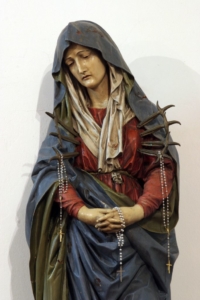
What are they? They are a weeping mother. Why does a mother weep? She weeps for her wayward children. She weeps over the souls headed for hell. She weeps for a world on the brink of disaster. She weeps for the wayward priests. The chrism oil is used for baptism, confirmation and ordination. She weeps therefore for sacraments defiled by sin. She is Our Lady of Guadalupe so she weeps for the immigrant children. She weeps for Mexico and Central American plunged into murder, drug abuse and crime. She is the patron too of North America and of the unborn, so she weeps for the children aborted, cut up and their body parts sold. She weeps for the needless suffering of children abused by lustful prelates. She weeps for America and is like a second statue of liberty–but Catholic. She is therefore Mary Mother of Sorrows and the seven sorrows of Mary are there too in her copious tears. The seven sorrows of Mary are the devotional aspect of her being co-redemptrix for her tears are also the tears she sheds at the redemptive sufferings of her son. Her tears are her pain as her heart is broken by the seven swords of the seven sorrows.
I think there is more. The best vision of the Dolorous Virgin is in Mel Gibson’s film The Passion of the Christ where we see the Blessed Virgin walk with her son every step of the way.
In a 2003 article for the Wall Street Journal Peggy Noonan writes about her experience of speaking to the bishops, one of whom was McCarrick.
She said ordinary Catholics were devastated and demoralized by the sex abuse scandal that was just them breaking across the church. She wrote these words.
So, we are demoralized. But there is help. I spoke of the scene in Mel Gibson’s movie, “The Passion,” which I knew some in the audience had seen in screenings. Mr. Gibson had attempted, obviously, to base his film on the Gospels. But there are a few moments in which what might be called his art asserts itself, and he does it his way. There is one scene like this that for me was the great moving moment of the film. The broken and brutalized Christ falls under the weight of the cross. He is on his way to Golgotha. He’s half dead. When he falls, his mother runs to help him, and he looks up at her, blood coming down his face, and he says, “See, mother, I make all things new again.”
Here is the summary for me of what the weeping Madonna means – she’s weeping for the sin and sorrow of the children of the whole world, but she is also weeping for the church-the Body of Christ her son. She is weeping for the terrible things the church is enduring and for the terrible sins and the terrible purification to come.
Do people imagine that with McCarrick’s resignation this will all blow over and it will be business as usual?
Don’t fool yourself. Next week the report of the Grand Jury in Pennsylvania is to be published and I predict we will hear about even more cases of historic abuse and cover up from the dioceses of Pennsylvania. Furthermore, I think the McCarrick case will continue to shine a spotlight on all the bishops and cardinals who knew about his predatory proclivities and either said nothing or covered up.
The four sins that cry to heaven for vengeance are murder (including abortion), sodomy, injustice to the refugee or foreigner and injustice to the wage earner.
I see the Blessed Mother crying to heaven for vengeance for all four of these sins in America, and I see that judgement about to fall.
So how do you read the signs of the times? Don’t ask too many questions and resist the temptation to pin the event down to one particular meaning because you will invariably choose a meaning that suits your own agenda and your prejudices. Instead stop and wonder and open your heart.
Just behold it in silence and feel her sorrow and enter her grief and pray her rosary for the salvation of yourself, your family, your parish, your priest, our church and our broken, sinful world.

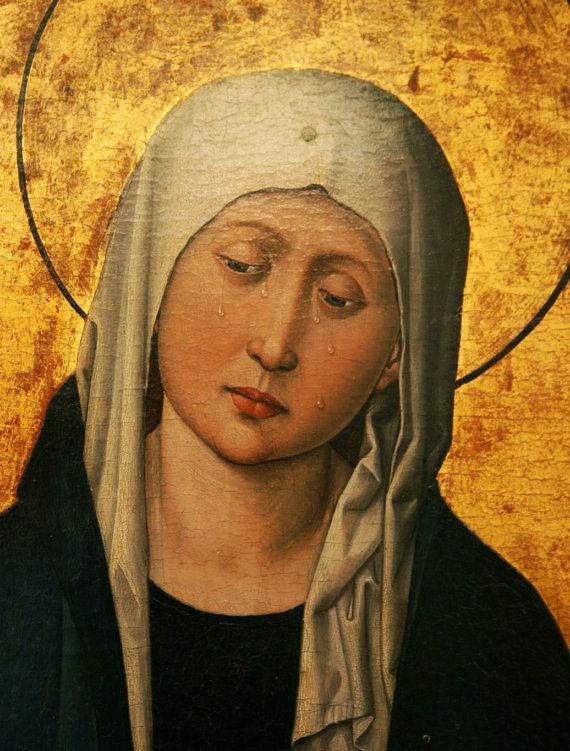
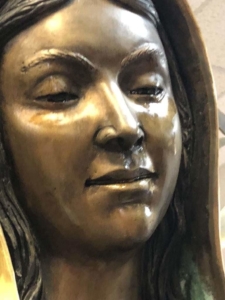
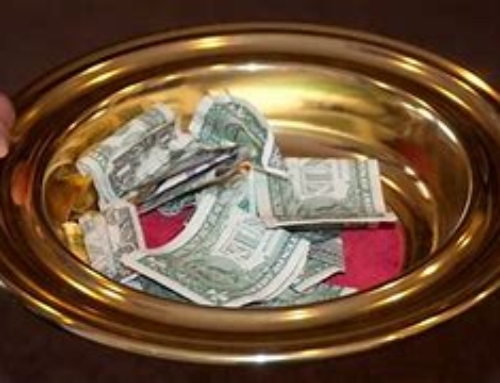


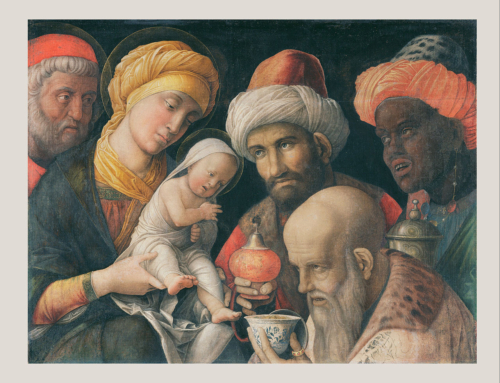
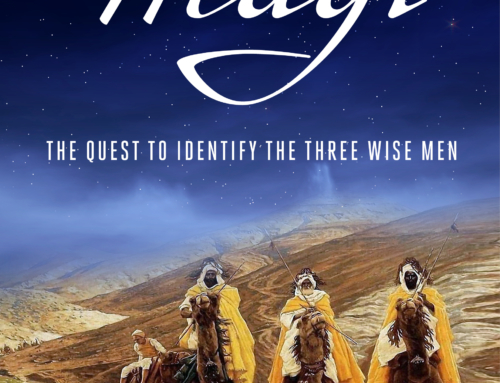
It is a very beautiful and heartbreaking scene in Mel Gibson’s movie, The Passion, when Jesus says “See, Mother, I make all things new again.”
Jesus is our help and our salvation. Our Blessed Mother pleads with us to do what Jesus tells us to do.
[…] Laura Durant Modesty Is More Than What We Wear – Jeannie Ewing, Catholic Exchange The Sign of the Weeping Madonna – Fr. Dwight Longenecker Arranging the EF Breviary for the Rest of the Liturgical Year […]